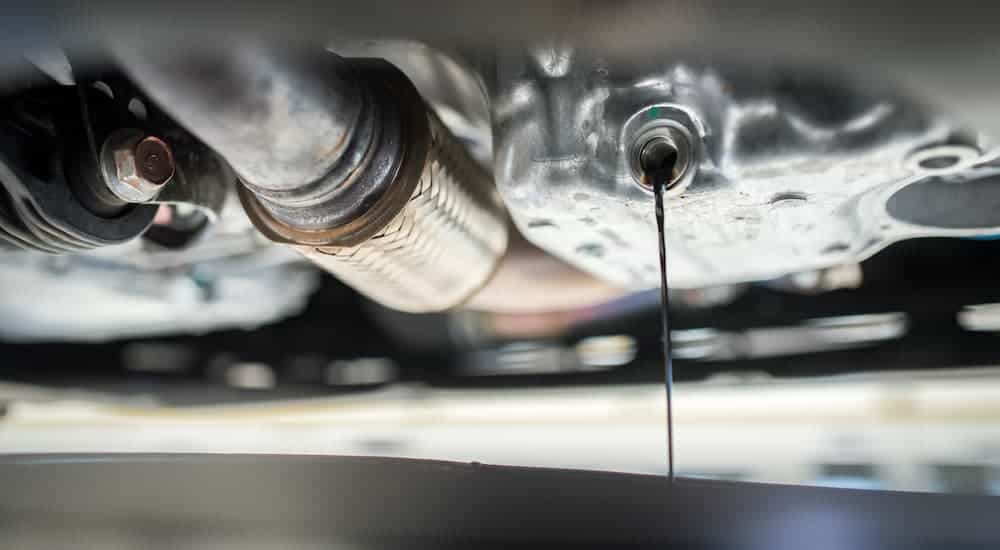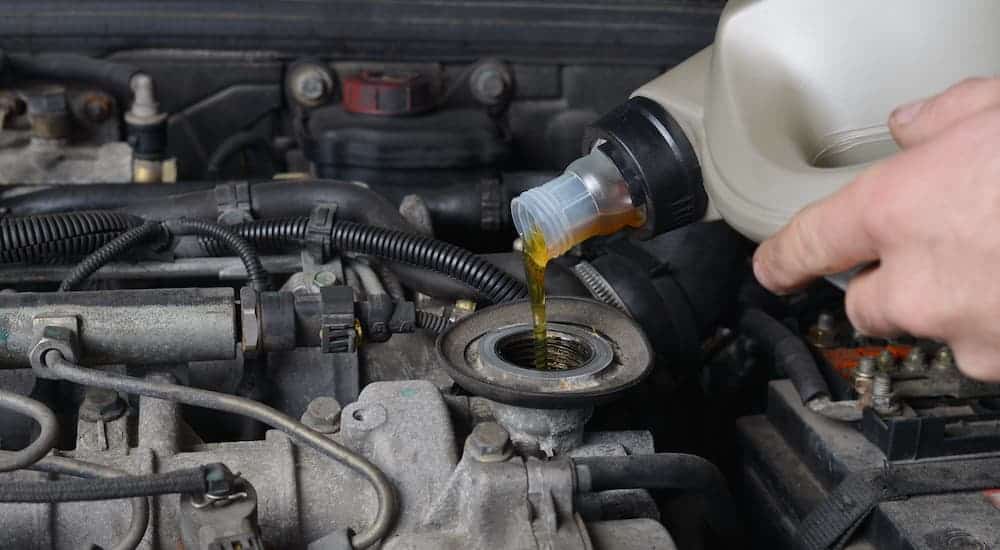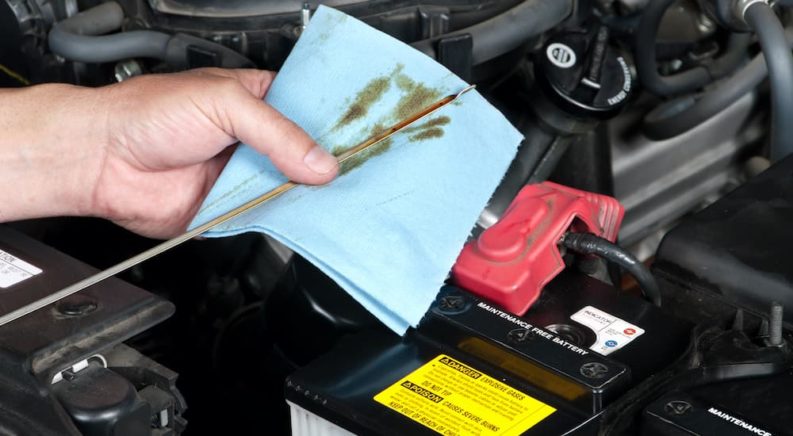There are certain things that seem certain in life, most famously death and taxes. But I would also add for most of us that list also includes car maintenance. It may seem like a chore to most of us, but before you let out that knowing sigh, I want to try and convince you that not only is car maintenance easy, but it can also be fun. You don’t have to be a mechanic to do it either. It just takes a change in mindset and a little know-how. Ok, and maybe a little elbow grease too. And what better place to start than how to change the oil of your used Jeep Grand Cherokee?
While it might seem daunting at first, all we need is a bit of knowledge. Like all tasks, if you break it down into bite-sized chunks, what once seemed overwhelming can be quite simple. You just need to know where everything is in your Cherokee, what oil is best for it, and how to safely and efficiently change it. Before you know it, you’ll be running your own side business doing car repairs – or at least impressing your partner enough for a backrub.
What’s Inside Your Jeep Cherokee
All automobiles work basically the same way with the same major parts. Some are just located in different places and look a little different. Just like people, really. We all have one brain, two lungs, a stomach, and a heart, and they are all basically in the same places, running all the systems we need in our body to keep it operating. The same goes for your Jeep. So first, you need to know where all the major parts are. When it comes to your oil, you’ll need to find your oil cap, oil filter, and oil pan drain because all three will have to be removed. You’ll need to pop the hood and crawl under the car to get a good grasp of where these are first.
Gather All Your Supplies
Next, you’ll need to gather everything you’ll need, most importantly, some good oil. While it may be tempting to grab the cheapest bottles you can find, choosing a high-quality oil designed for your vehicle is crucial to keeping everything running smoothly. Make sure to get a full-synthetic oil that has been approved by the SAE for maximum engine protection. It is also important to get the right grade of oil for your engine and model year; this can range from 5W-30 for older models to 0W-20 for newer models – check your owner’s manual to learn which oil is right for your Grand Cherokee.
Once you’ve decided on the oil, you’ll also need to replace the oil filter. Most any name brand filter will give you a good quality filtration, but make sure it fits your engine and model year. When it comes to tools, you’ll need an oil filter wrench, ratchet, and 5/8″ socket. Finally, you’ll want an oil catch pan, a funnel, rags or newspaper, and a way to store the old oil (some catch pans have lids, and these are generally the most convenient option). After you have gathered your tools and supplies, you are all ready to begin.

Safety Precautions Before You Start
Remember to take safety into account before starting. While changing your oil is a relatively safe process, you still should consider precautions before you start. Wear clothing you don’t mind getting dirty, and consider latex gloves and safety glasses to keep your hands clean and debris out of your eyes. From there, you should make sure your Jeep is parked on a level service and that your parking brake is applied. You’ll also want to change your oil while the engine is warm so the old oil will come out more easily, but avoid changing it right after your Jeep has been driven because you might burn yourself. Letting it cool for twenty or thirty minutes will leave it warm enough but prevent any burns.
Changing Your Oil
Once you have everything in place, remove the oil cap from the top of your engine. After you have removed it, place newspaper with an oil catch pan underneath your engine to catch the oil. Then using your wrench, slowly remove the oil pan drain bolt, making sure you do not drop it in the catch pan. This will then allow the oil to drain. After you wait for it to drain completely, use your oil filter wrench to remove your oil filter. This is located on the passenger side of your engine. Remove it, making sure the thin rubber gasket comes off with it.
Then apply a small amount of new oil to the gasket and threads of your new filter before attaching it to your engine. Tighten it using your hands, as using a wrench can damage it. Be very careful when hand tightening so that you do not over-torque. This is one of the most common mistakes when changing your oil. Once you’ve done that, confirm that your oil has drained completely, then re-attach your oil pan drain bolt and proceed to fill your engine with the correct amount of oil using your funnel. Once you have completed this, screw the oil cap back on and check to make sure it and the oil pan bolt are secure.

Disposing of Old Oil
It’s important not to dump your used oil as it is bad for the environment. Further, with a little bit of cleaning, oil can be reused again and again. So it’s worth it to have it recycled. When you have completed your oil change, make sure the old oil is secure in a sealed container. You can then drop it off at an oil recycling center near you. If you don’t know where one is, try contacting your local auto parts store. They often have their own oil recycling centers.
How Often to Change Your Oil
We have all likely gone past the sticker date to get our oil changed at one time or another, but it’s important to stay as close to your mileage estimate as you can. For your Jeep Grand Cherokee, you’ll want to change it at least every 7,500 to 10,000 miles if you are using synthetic oil. If most of your drives are short distances or if you spend a lot of time on dirt roads, then consider changing it between 5,000 and 7,500 miles. Again, this might seem like a hassle to do so often, but oil is what keeps your engine running in tip top shape. If you put it off too long, it can gunk up inside your engine, causing serious damage. So stick with the regular changes and keep your engine running smoothly.
You can save a lot of money and time changing your own oil in your Jeep Cherokee. If you shop around for good deals on oil and filters, you can have a full synthetic oil change for as little as $50! Plus, you get the satisfaction of knowing you are handling your Jeep’s maintenance and the knowledge that the job was done correctly. There’s no shame in getting it changed by an oil change specialist, but you might have to schedule an appointment, wait in long lines, and pay more. So if you want to take on the challenge, all you need are a handful of supplies, some good oil, and a little bit of elbow grease to get it done.

